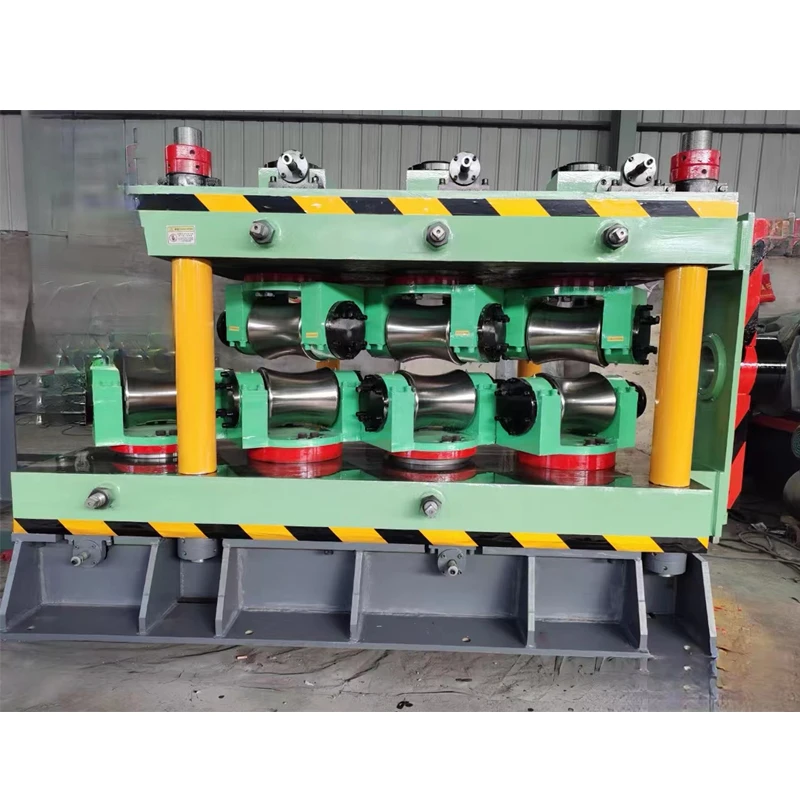Efficient Metal Roll Forming Machine for Precision Manufacturing Needs
The Advantages of Metal Roll Forming Machines
Metal roll forming machines have become essential tools in the manufacturing industry, particularly in the production of metal components and sections that require specific shapes and profiles. These machines are designed to convert flat metal sheets into desired shapes through a continuous bending process. Here, we will delve into the advantages of using metal roll forming machines, their applications, and the technology behind them.
Efficiency and Precision
One of the most significant benefits of metal roll forming machines is their efficiency. Unlike traditional metal fabrication methods, which may involve multiple processes such as cutting, bending, and welding, roll forming allows for continuous production. This not only speeds up the manufacturing process but also reduces waste material as it can utilize large sheets of metal and seamlessly produce longer sections without interruptions.
Moreover, roll forming machines are renowned for their precision. With computer-controlled systems, these machines can create highly accurate and consistent profiles that meet strict specifications. This level of precision is critical in industries such as construction and automotive, where even minor discrepancies can lead to significant problems down the line.
Versatility in Design
Another advantage of metal roll forming machines is their versatility. They can produce a wide range of profiles, including angles, channels, and custom shapes tailored to meet the specific needs of various industries. This adaptability makes them suitable for applications in construction, manufacturing, and even decorative purposes.
Manufacturers can design roll forming dies to create unique shapes, allowing for innovation in product design. Whether it's creating roofing materials, wall panels, or intricate decorative elements, metal roll forming machines can accommodate diverse design requirements with ease.
metal roll forming machine

Cost-Effectiveness
Over time, the investment in a metal roll forming machine can lead to significant cost savings. Because these machines streamline production, reduce material waste, and often require fewer labor resources, the overall operational costs can be lower compared to traditional manufacturing methods. Additionally, by automating many of the processes, companies can minimize human error, which further contributes to cost reduction.
The durability of the products produced from roll forming also adds to its cost-effectiveness. Metal components created through this process tend to have better structural integrity, which can lead to a longer lifespan and lower maintenance costs for the end-use applications.
Environmental Benefits
In today's manufacturing landscape, environmental considerations are more important than ever. Metal roll forming machines contribute positively in this area as well. The continuous production process and efficient use of materials mean that less waste is generated compared to conventional fabrication methods. Furthermore, many metals used in roll forming, such as steel, are recyclable, contributing to a more sustainable manufacturing approach.
Conclusion
In summary, metal roll forming machines represent a forward-thinking solution for modern manufacturing challenges. Their ability to efficiently produce high-precision components, versatility in design capability, cost-effectiveness, and environmental benefits make them indispensable in various industries. As technology continues to advance, these machines are likely to become even more integral to the manufacturing landscape, paving the way for innovative developments and improving overall production processes. Whether for large-scale construction projects or specialized manufacturing needs, metal roll forming machines stand out as a smart choice for businesses seeking efficiency and quality in their production lines.
-
High Frequency Straight Seam Welded Pipe Production Line-BzZhou Xinghua Machinery Equipment Manufacturing Co., LTD.|line pipe steel&welded gas pipeNewsJul.30,2025
-
High Frequency Straight Seam Welded Pipe Production Line-BzZhou Xinghua Machinery Equipment Manufacturing Co., LTD.|High Precision&Automated SolutionsNewsJul.30,2025
-
High Frequency Straight Seam Welded Pipe Production Line - BzZhou Xinghua Machinery Equipment Manufacturing Co., Ltd.NewsJul.30,2025
-
High Frequency Straight Seam Welded Pipe Production Line-BzZhou Xinghua Machinery Equipment Manufacturing Co., LTD.|Precision Welding, High EfficiencyNewsJul.30,2025
-
High Frequency Straight Seam Welded Pipe Production Line|BzZhou Xinghua|Precision Welding&EfficiencyNewsJul.30,2025
-
High Frequency Straight Seam Welded Pipe Production Line - BzZhou Xinghua|Precision Engineering&EfficiencyNewsJul.30,2025


